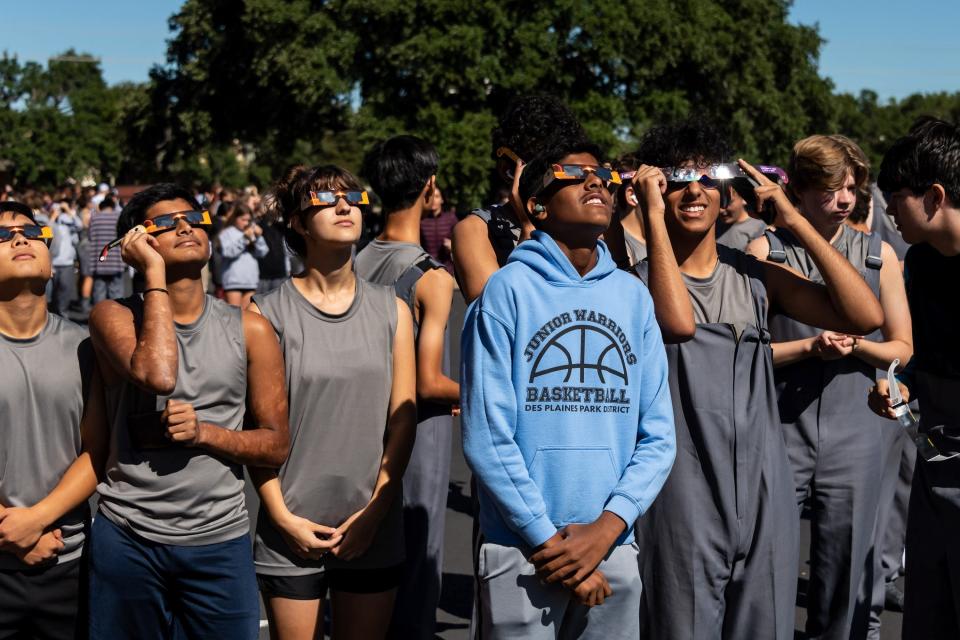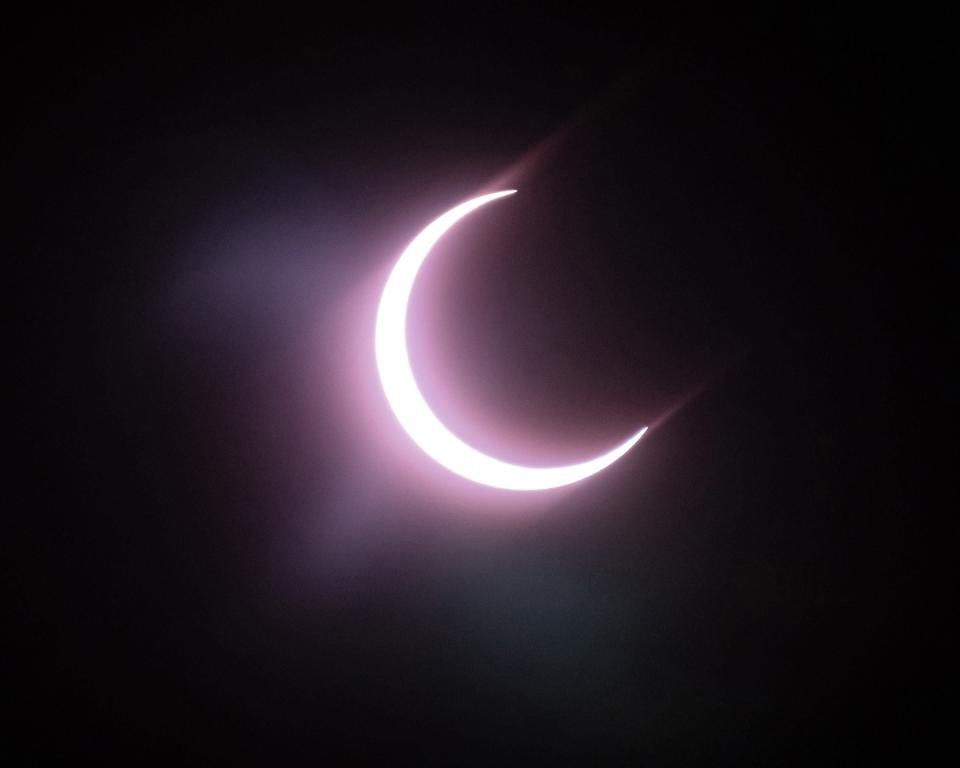Austin will be cast in complete darkness by total solar eclipse in April. What we know.
Austin was graced with prime views of a solar eclipse in October, and we're about to get a better show in April.
The eclipse in October was annular, meaning the moon only partially covered the sun in Austin, creating a "ring of fire" effect. The eclipse in April will be a total eclipse, during which the moon will totally block out the sun's rays for a short period of time.
What do you need to know ahead of the April solar eclipse to get the best viewing experience? We've got you covered:

When is the total eclipse?
The total solar eclipse will happen on April 8, and its path will move northeast from Texas to Maine.
PHOTOS: What the solar eclipse looked like in Austin and across Texas
How long will the eclipse last in Austin?
The best time for viewing the eclipse in Austin will be between 1:35 p.m. and 1:40 p.m.
What is a total solar eclipse?
During a total solar eclipse, the moon passes in front of the sun, blocking its light and leaving areas in its path in total darkness. Total solar eclipses happen only about once every 18 months and cannot be viewed from everywhere. After 2024, the next total eclipse that will be viewable from the U.S. won't be until Aug. 23, 2044.
Will the eclipse be visible from Austin?
Yes. Austin is in the eclipse's "path of totality," which is the track of the moon's shadow across earth. This means that Austin and other parts of Central Texas will get to experience total darkness as the moon passes in front of the sun. Other areas in the U.S., outside of the path of totality, will only experience partial darkness.

More: CNN names Texas Hill Country as one of the best places to visit in the world in 2024
The last time Austin was in the path of totality, it was the 1300s.
It was 1397, to be specific. Yes, the last time Austin was covered in darkness by a total solar eclipse it was 1397. Isn't that wild? NASA gave us that stat and we've yet to recover.
When will Austin be in the path of totality again?
This won't happen again in Austin until Feb. 25, 2343, according to NASA.

You'll need eclipse glasses.
Looking at the sun for too long can cause eye damage, and NASA is recommending special eclipse glasses meant for viewing a total solar eclipse. Regular sunglasses will not suffice. Eclipse glasses can be found pretty much anywhere — Amazon, Target and Walmart are all selling them. Just make sure the pair you buy, which should cost only a couple of bucks since they're made out of cardboard, have an "ISO" (International Organization for Standardization) icon on the frame.
Can't get enough of eclipses?: Southwest Airlines offers April flights directly in the path
Make a pinhole camera if you don't want to use eclipse glasses.
If looking up at the sun isn't your thing, opt for a pinhole camera. You can make your own using a cardboard box, a white sheet of paper, tape, scissors and aluminum foil, according to NASA.
Make a small hole in your aluminum foil and tape it over one side of your box. Tape your white sheet of paper inside the box and cut another hole into the box for viewing. Sunlight will go through the pinhole and project onto the sheet of paper, allowing you to see the eclipse.
Staff writer Ryan Maxin contributed to this report.
This article originally appeared on Austin American-Statesman: What you need to know about 2024 total solar eclipse in Austin, Texas

